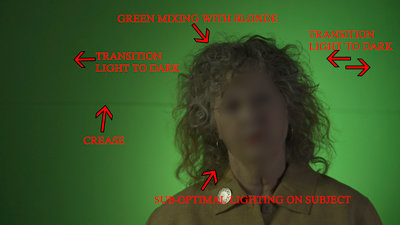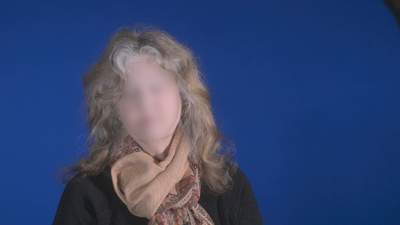When I first entered the fray as a fledgling movie-maker in the opening months of 2014, I had a grandiose vision of filming my documentary’s talking head experts on green screen and placing them against my backgrounds. It seemed so mind-numbingly simple in concept that nothing could go wrong…
Right, it became a nightmare and I deserved the pain for not being properly prepared for this critical aspect of the documentary. How I wish that I had this book in-hand while doing the ever-important planning for these interviews. Much of its sage advice I have gleaned since my first dabbling in green screen but this was not all found in one convenient place as it is in “Green Screen Made Easy.” While this article will be partly a review of the book, the rest of it will be a reflective look back at my rookie mistakes that many newcomers to chroma-keying are affected by.
In filming “The Regulators” in 2014, I had five on-screen subject matter experts. Two were female and three males. While chroma keying is gender-agnostic in principle, it isn’t in terms of fine details such as hair. Actually, the three males sported short hair. One of the females had longer hair and the other had a full, flowing set of hair. This lady was my first interviewee and I was completely naive in setting up the lighting for her. Needless to say, my results ranged between disastrous and mildly acceptable. I know that I pushed Keylight in After-Effects as hard as I could but with my 20/20 hindsight, I could have made much better lighting choices and better utilized the resources at my disposal. This is where a book like this one can help a beginner to get up to speed within hours or, at most, a few days.
Here is an example of the problems I created and could have avoided early on. This is a perfect example of what not to do. Ever.

Another problem which I did not include in the picture is that the subject to screen distance was too close. This made the green spill even more intense. Also, this was shot on a DSLR with 4:2:0 color which really caused issues with the fine details and the spill. Some of the footage of the interview was totally unusable while the others were marginally useful.
I learned the hard way and was, over time and with lots of diligent investigation online, able to resolve these issues. My later interviews for that same documentary improved but were not perfect by a long shot.
If I had this book in hand I would have discovered that within the first few chapters of the book, all of these items are dealt with and some additional important suggestions are presented! One of these is using backlighting with a complementary color to the screen color and also ways to make the screen glow in its color.
Now that I am reworking “The Regulators” for a director’s cut 250th anniversary edition, I was able to re-shoot the interview with this person. Notice the difference in the image quality by shooting on blue screen with a 4:2:2 Atomos Ninja and concentrating on the lighting of both the screen and the subject. The procedures that I used were similar to the processes outlined in the book. Also in the book are discussions about how to optimize the camera and its ability to capture as clean an image as possible of both the background and the subject.

Once good images have been captured then they need to be processed properly. Using the matte keyer is not a simple “press the button and Hey! Presto!” it is done in most cases. It is important to know how to manipulate the results to optimize them. The book leads the reader through important techniques such as how to reduce jagged edges, reducing artifacts, and ensuring that you can pull as clean a key as possible. Several software packages are presented along with their workflows. Another aspect of the book that makes it an invaluable resource for the filmmaker’s bookshelf is that it touches on how to deal with several problems that may crop up such as dealing with holes and reflections.
A decent section of “Green Screen Made Easy” deals with selecting and even making your own green screens and cyclorama stages. One thing that I appreciate with how the authors deal with this subject and the subject of lighting is that they present a number of options that are within the reach of beginner who may be on a shoestring budget all the way up to well-established and well-funded film makers.
The final section of the book introduces several subjects that need to be considered. Chroma-keying is not done in a vacuum, it has to believably exist within the realm of the composite. Light wrapping, dealing with shadows, considering the directionality and color of light on the subject relative to the background, and other such important topics are explored. We have all seen the typical green screen extraction pasted against a background which doesn’t match in tone, color, or shading and have immediately been able to say, “That is some bad green screen!” Even the crucial topic of adding grain is discussed.

Pingback: Green Screen Layout | Chris' Creative Musings